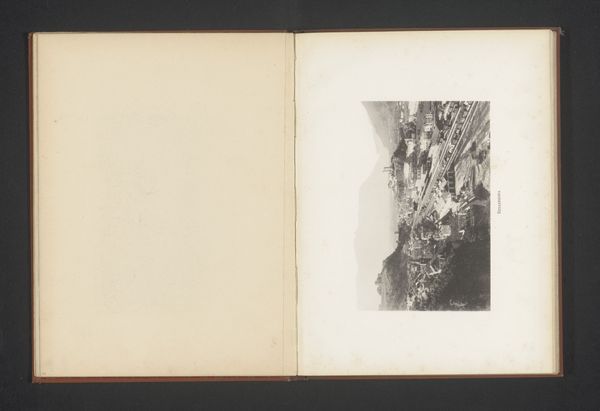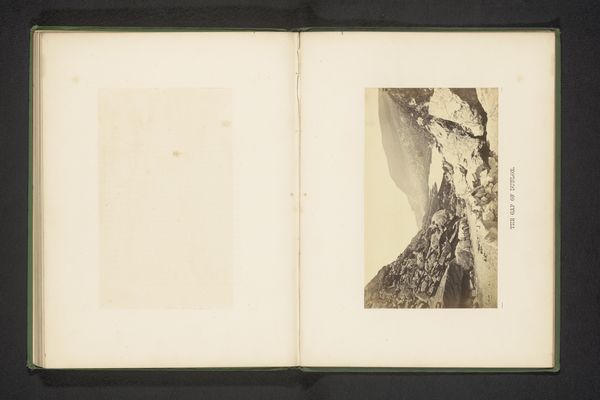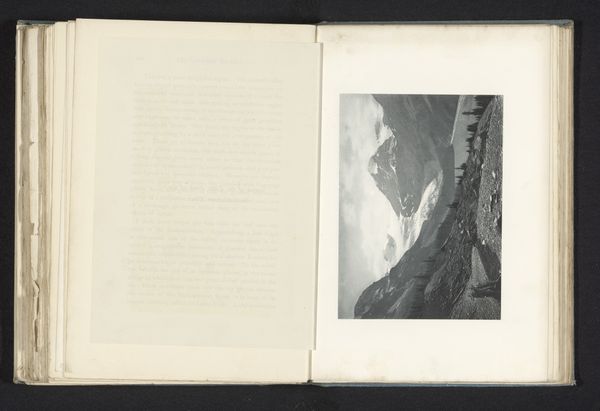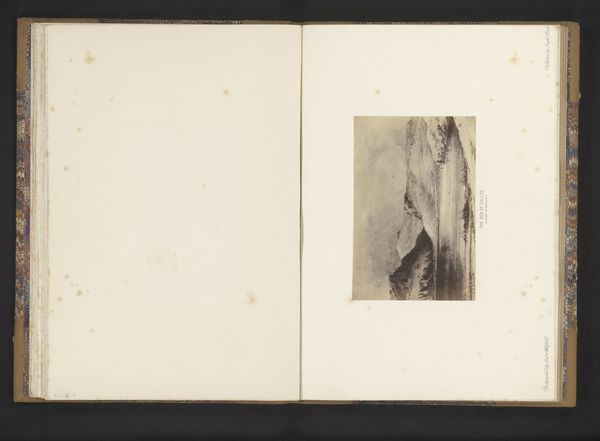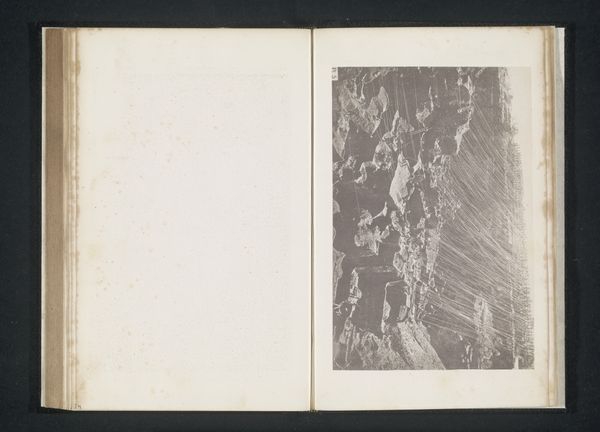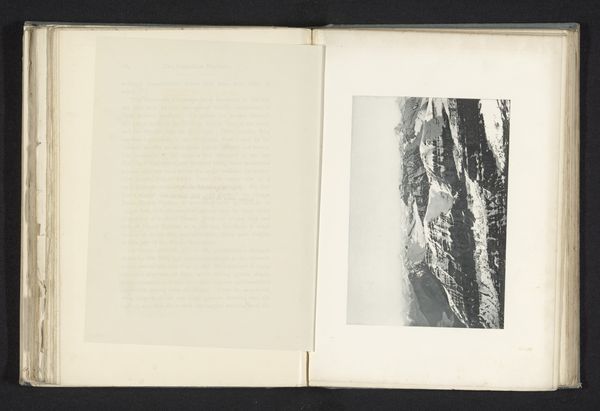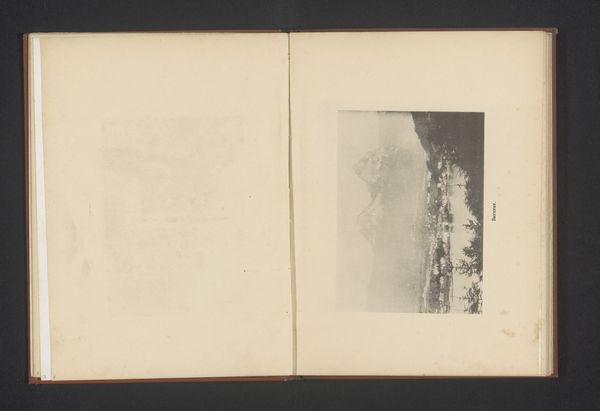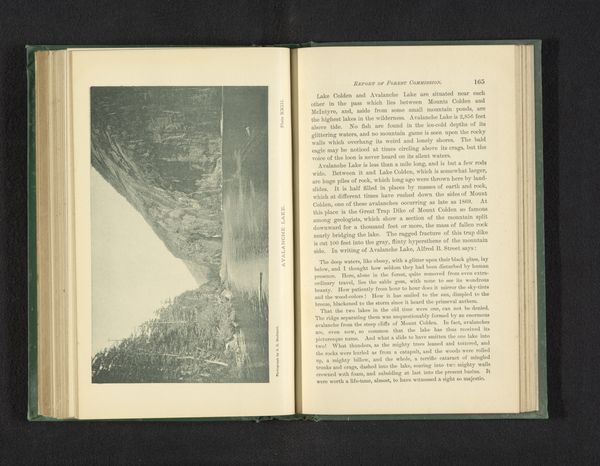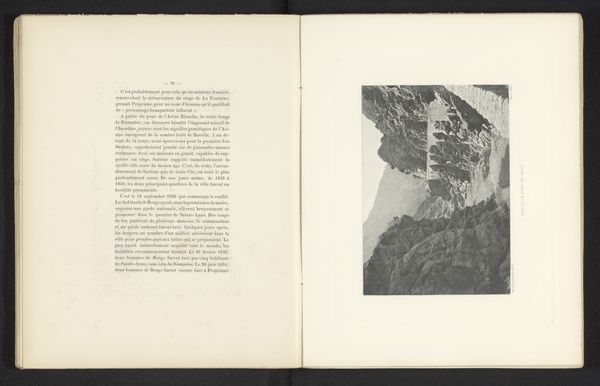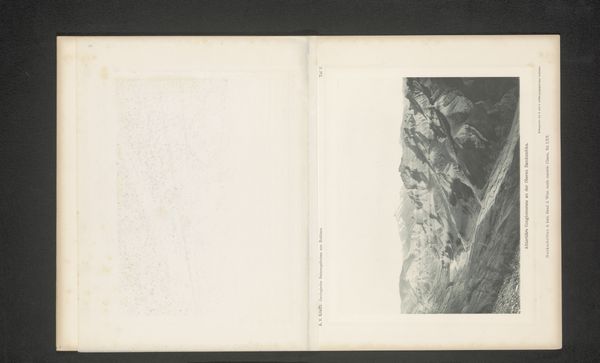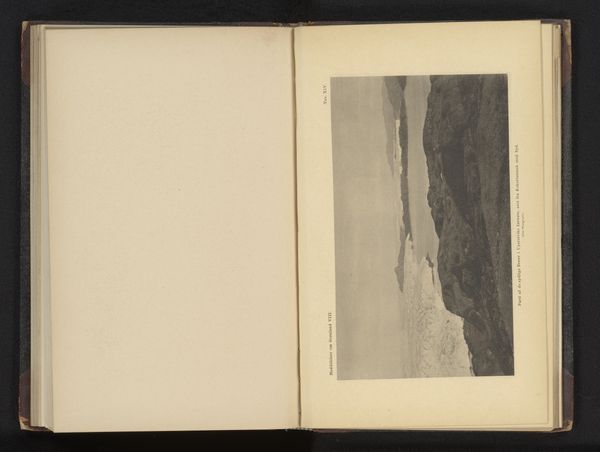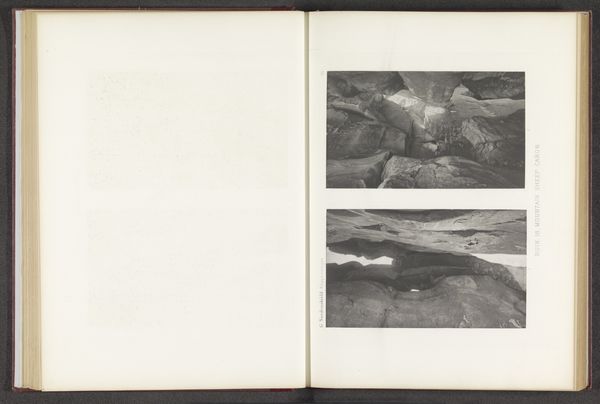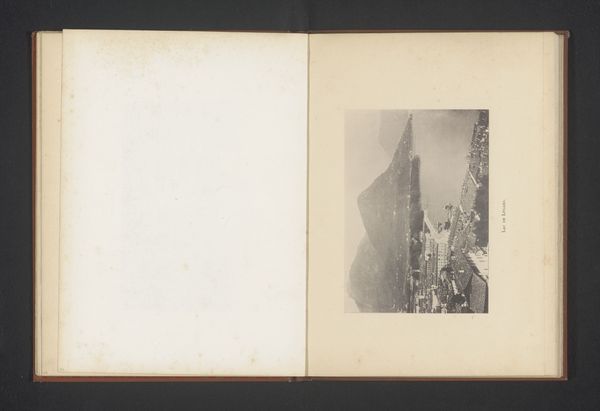
print, photography, gelatin-silver-print
#
ink paper printed
# print
#
landscape
#
photography
#
gelatin-silver-print
Dimensions: height 120 mm, width 166 mm
Copyright: Rijks Museum: Open Domain
Curator: This is an early photographic print titled "Gezicht op Wasen," meaning "View of Wasen." Dating back to before 1898, it utilizes the gelatin-silver process. It appears to be a documentation of the Wasen region in Switzerland. Editor: The monochrome is striking, evoking a sombre, industrial feeling... quite a contrast between nature and developing human infrastructure, wouldn’t you agree? The lack of color seems to emphasize a kind of loss of vitality from the earth. Curator: Well, that’s the crucial tension in a piece like this, right? Look at the paper's patina itself - you see this degradation, these fingerprints, almost fossilizing labor, marking production but it's almost like a form of archaeology too! A reminder that its production wasn’t this sterile, objective act. Editor: Exactly! And how would such images affect perceptions of labor, gender, and mobility during a pivotal time? This Wasen depicted looks rugged; who lived there, who moved through this space, and what power structures defined their lives, and perhaps restricted these same rights to others? The angle from which the picture is taken makes me dizzy just considering how difficult to reach, it seems so very remote. Curator: And perhaps the image becomes not only documentation of a landscape, but documentation of human ambition and technological advance – a visible process of conquering and exploiting the landscape. One can almost hear the train labouring up the inclines! Editor: Thinking about photography at the fin de siècle – there's this burgeoning sense of nationalism, an idea of cultural identity linked to landscape. This photographic view almost feels like nation-building on gelatin-silver! The act of imaging and framing becomes a possessive act in itself. Curator: True, and even further back one would ask: who was holding the camera? Where was this image consumed? Photography in particular really collapses hierarchies of skill when you consider what was, and wasn't, considered labor in its production. Editor: And yet here we are, looking back, still analyzing and layering new narratives on this frozen moment. Its ambiguity remains, an invitation for interpretation and connection to our current concerns, but ultimately, a haunting memento of that early modern world, forever.
Comments
No comments
Be the first to comment and join the conversation on the ultimate creative platform.
